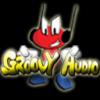I'm doing some referencing for a university project, and I wondered if anyone here could help me find a particular reference.
I would like to state the fact that trackers were involved in composing music for game consoles in the 80's-90's, however I don't have any real resources to back this (and further points) up. I would really appreciate some kind of academic journal or article that gives an overview of how music was composed for Sega Megadrive games in particular (and why), because my project relates to FM synthesis and I plan on discussing the FM chip used by the Megadrive.
My project is mainly about polyphony and I would like to remark upon the fact that tracker music usually consisted of monophonic melody lines that when played together may appear to be polyphonic. This is the exact point I need some reference material for. I only 'know' this currently because I have acquired Renoise tracker files for Sonic music that have been fan made, and I can only assume...
So yeah... a history of tracker music for Sega Megadrive anyone?!









